There is much discussion these days about anime tourism such as seichi junrei, in which fans visit the locations of their favorite anime, especially when those anime took the pains to locate scenes and events in actually existing spaces.
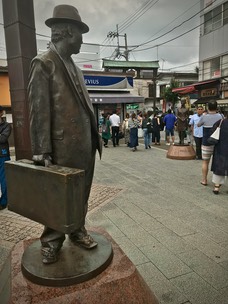
Tourism based on moving images is nothing new, however. Postwar film series such as Nikkatsu’s Rambler (Wataridori) series or Shochiku’s Tora-san (Otoko wa tsurai yo) series featured roving heroes in part so that each film would be set in a different place and spark tourism to that location. The Taiga Drama series on NHK is famous for generating tourism to the locations the actual history depicted in the drama took place.
In going to the Tora-san Museum the other day, right after visiting the Ichikawa Kon Memorial Room, I could see a facility that attempts to generate tourism about a film series that itself attempted to generate tourism. In this case, the entire area around the museum has become part of tourist double mirror.
The Tora-san series, largely created and directed by Yamada Yoji, features the itinerant peddler Kuruma Torajiro. Forty-eight films were made in the series while the actor Atsumi Kiyoshi, who plays Tora-san, was still alive, making it one of the most successful film series in Japan, if not the world. In every film, he has to return home once or twice, and that home is in Shibamata, Katsushika-Ku, Tokyo. And that, naturally, is where the Museum is located.
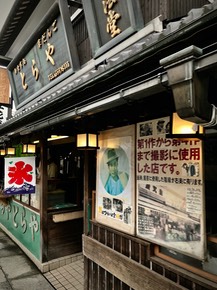
The Museum is a bit of a walk from Shibamata Station on the Keisei Kanamachi Line, but you feel you’re already inside when you exit the ticket gate. In the square in front of the station, there’s a bronze statue of Tora-san, with another statue of his sister Sakura looking on a few meters away. The space is oriented so that you naturally proceed towards Taishakuten, a Nichiren sect Buddhist temple. That for long was the main attraction in Shibamata, and probably it still is, but Tora-san has changed the palette of the area. As with many prominent Buddhist temples and Shinto shrines in Japan, the main road to the place is lined with shops, and in the series Tora’s family runs one of those shops. Not a few now sell a Tora-san related good or two, but Toraya (pictured), which sells kusa dango (mugwort dumplings), can boast that it was used as the location of the family shop in the film.
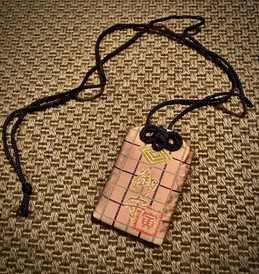
Taishakuten itself is a small, but quaint temple, which is worth a visit in itself. It appears in pretty much all the editions of the series, and in the early years, the head priest was played by Ryu Chishu, famous for his roles in Ozu Yasujiro’s films. Tora-san is now present in the temple as well: not only can you buy Tora-san good luck charms at the temple, like I did (pictured), but a machine selling Tora-san related trinkets plays the series theme song over and over and over.
To get to the Museum, you have walk from the temple southwest towards the Edo River for about five minutes. The entrance is under a bridge, as the museum has kind of been melded into a park.
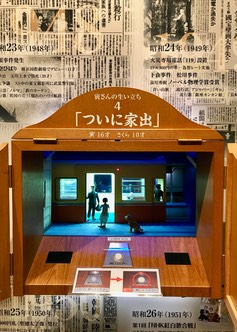
The Tora-san Museum is basically an operation in nostalgia. With most of the exhibits about the movie series, of course the main object of nostalgia is the movies, but a number of the exhibits are about Shibamata, or about “shitamachi” itself. While “shitamachi” originally referred to the plebeian area of Edo/Tokyo versus the “yamanote” area where the samurai and later upper classes lived, it developed into a mythified version of the hometown (“furusato”), an originary space of Japanese society where gemeinschaft relations still exist. The Museum has a room devoted to a miniature “shitamachi” town, unrelated to anything in the series (in part because one could argue that shitamachi already was gone by the time the series started). It also has a “Furusato Station” showing off Shibamata’s first rail line—which was hand-pushed.
The Museum also takes pains not only to show off the series, with several rooms letting you enter the main spaces in the series—the family shop and the printing company in the back—as well as watch clips from the films. It also attempts to insert Tora-san into modern Japanese history, especially at the beginning, when a series of quaint, moving dioramas narrate with sound Tora-san’s early life, each surrounded by newspaper clippings from that era (pictured is the one of him running away from home). The point is supposed to be that Tora-san is not a made-up object of nostalgia (as most objects of nostalgia are), but one based in a real, but past history.
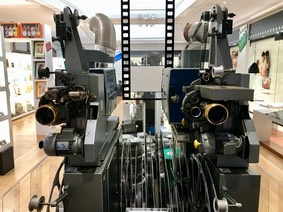
If the Museum has one other object of nostalgia, it is made apparent in the Yamada Yoji Museum, which is just one large room located in the same building. The Tora-san Museum begins with a room explaining how films are made, and the Yamada Museum goes one step further to display much of the equipment used on old film studios. It even displays the 35mm projector used at Asakusa’s last film theater, as well as the projector of one of the last Katsushika Ward theaters to show celluloid (pictured). Clearly the other object of nostalgia here is cinema, especially a classical cinema based in celluloid and the local movie theater. The Yamada Museum includes a mock theater where you can sit and watch trailers for Yamada’s films.
The Yamada Yoji Museum, being smaller, has less on display, but it is a good introduction to much of Yamada's other work, especially his early comedies and his later social problem films. It talks a bit about his debt to classical Japanese cinema, especially Ozu, while also noting his productivity beyond film, such as his work in television and in rakugo.
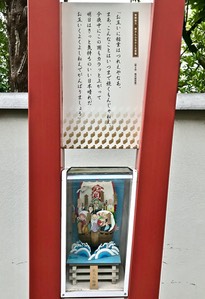
It is true that the last room in the Tora-san Museum features digital: mobile projected images of all the Tora-san movie posters. Perhaps it is an effort to bring Tora-san into the present (the Yamada Museum also has a display introducing the new edition coming out in December 2019), but the room is so foreign to what you’ve seen before that—a dark and featureless space—that it almost seems to serve as a moat protecting the Tora-san world from external incursions.
Yet when you leave the Museum and enter the building courtyard, the floor is a map of Japan noting all the spots Tora-san visited. The secluded Tora-san has become national geography.
When I returned to the streets heading back to the station, I noticed a display on the side of the street featuring some quote from Tora-san found in the movies. It seems there are nearly a dozen of these spread around Shibamata. Shibamata has become part of the museum, part of the films, and Tora-san has become Shibamata. It was thus quite appropriate that when I got back to the station, there was Tora-san himself: someone dressed up like Tora-san was walking in the square, right near the statue. I wasn’t quite sure if I was in the movie or not. The town itself was the double mirror.
Of course this could happen to me because I know the Tora-san series well. But the day I visited was also the day of a fireworks exhibition: there were a lot of young people and non-Japanese (including, of course, me). I wonder how many of those people noticed Tora-san encroaching on reality or the Tora-san politics of geography Shibamata had become. Probably not that many. Yet perhaps that is the point: if everyone everywhere knew about him, he wouldn’t be the object of such national nostalgia.

